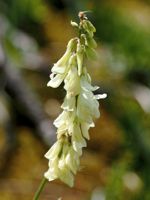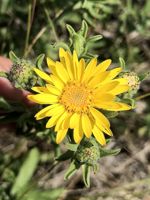Mon-Fri 9am - 5pm Mountain time
Yellow Hedysarum vs Hairy Golden Aster
Hedysarum sulphurescens
Heterotheca villosa
CUSTOM GROW
NOT AVAILABLE THIS SEASON - MIGHT RETURN
Yellow Hedysarum is a native perennial wildflower recognized for its clusters of pale yellow to creamy-white, pea-like blooms. Flowering from late spring into summer, it adds subtle colour to grasslands, roadsides, and open woods while attracting a variety of pollinators, especially bumblebees.
As a nitrogen-fixing plant, Yellow Hedysarum enriches soils and supports the growth of surrounding vegetation. Its deep taproot and extensive root system make it drought-tolerant and effective at stabilizing soil. Grizzly bears are known to dig up and eat the nutritious taproot. Its resilience and ecological value make it well-suited for restoration, naturalization, pollinator gardens, and erosion control projects.
Hairy Golden Aster is a native perennial wildflower known for its clusters of bright yellow, daisy-like blooms. They bloom from mid-summer into fall, providing late-season colour and a valuable nectar source for pollinators, including a variety of bee species.
Flowers mature into fluffy seed heads and can self-seed readily. Removing spent blooms helps manage their spread, but some people will choose to leave a few seed heads to provide food for birds. Hairy Golden Aster grow in bushy clumps, tolerates poor sandy soils, and once established, are among the most drought-tolerant wildflowers. They are well-suited for pollinator gardens, restoration, naturalization, and xeriscaping projects.

